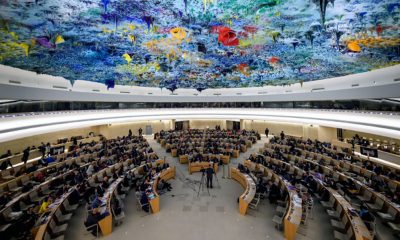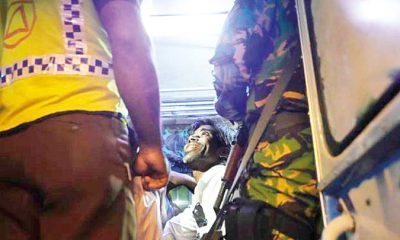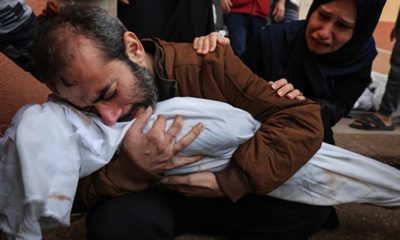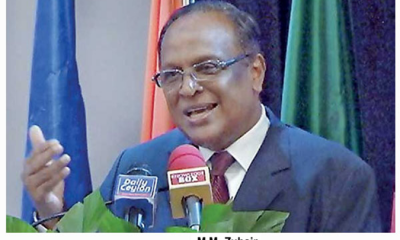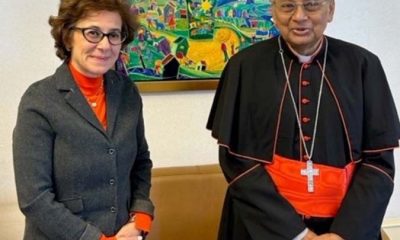Features
Resolution #9: Protecting Human Rights & Prosecuting Economic Crimes
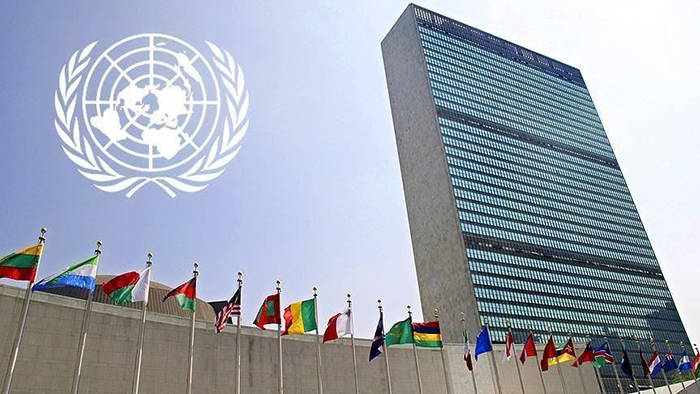
by Rajan Philips
Sri Lanka is facing its ninth Resolution at the current UNHRC session in Geneva. To be clear, it is not the people of Sri Lanka but the government that is being embarrassed in Geneva year after year. It is because the government shows up every year without doing any of the homework it promises to do. Every year, the resolution gets longer – with new paragraphs added to old ones. In this year of Gotabaya disgrace, a new clause has been added concerning the country’s current economic crisis. That has raised plenty of hackles among self-righteous patriots.
There are also plenty of other Sri Lankans, no less patriotic and not just diaspora Tamils, who are welcoming the new resolution and its reference to the economic crisis and its criminal perpetrators. The resolution itself does not include the words, ‘economic crimes,’ but calls upon the government to investigate and even prosecute “corruption by public and former public officials,” and assures that the Commission “stands ready to assist and support independent, impartial, and transparent efforts in this regard.” What is wrong with that? Sri Lanka’s Foreign Minister has a different take.
Addressing the Commission before the 9th Resolution was released, Foreign Minister Ali Sabry took the usual exception to the Acting High Commissioner’s Report for making “extensive reference to economic crimes.” The Minister went on to add that “apart from the ambiguity of the term, it is a matter of concern that such a reference exceeds the mandate of the Office of the United Nations High Commissioner for Human Rights (OHCHR).”
Back home, the Minister has been taken to task by commentators for being oblivious to the fact that in UN lexicon, human rights – all human rights including economic, social and cultural rights – are “indivisible, interrelated, interdependent and mutually reinforcing.” If anyone thinks women’s rights are excluded, Hillary Clinton famously answered it in Beijing nearly 30 years ago, declaring that “women’s rights are human rights and human rights are women’s rights, once and for all.”
Economic Crimes
All rights are one and indivisible, and the violation of each is a crime. Even so, why pick on a small country like Sri Lanka when there is no country in the world where there are no human rights violations or economic crimes. That has been the commonplace grouse among Sri Lankan objectors to what some of them call the “Geneva charade.” But calling it a charade doesn’t solve the problem. You can argue till the cows come home about how and why Sri Lanka got stuck in Geneva, but that will do little to get the country unstuck. It has become an agonizing annual ritual for the country and the yearly escalation in the resolution is a direct result of the government’s inaction during the preceding year.
The Rajapaksa regimes used Geneva as a platform to whip up political support at home. The Ranil (Wickremesinghe)-Mangala (Samaraweera) duo, on the other hand, thought they could find a way out of Geneva simply by co-sponsoring a resolution without any back up action to win public support at home. Both strategies backfired. This year is different. The UNHRC mandarins got an altogether new brief for their drafting of the annual resolution. That brief arose from the vortex of aragalaya protests that quite peacefully ended the presidency of Gotabaya Rajapaksa barely halfway through its elected term.
Minister Sabry can split hairs as much as he wants, but he cannot hide a pumpkin in a plate of rice. Not after aragalaya, and not after the expulsion of Gotabaya Rajapaksa from office. Mr. Sabry cannot deny that there were economic crimes committed by the Gotabaya Government that led to a wholly ‘man made’ economic crisis. Nor can he disagree that the men who made it must be made to answer for their crimes. If he wants UNHRC out of the picture, he should advise his current President to find domestic ways to bring justice to the victims of not only economic crimes, but all crimes committed by the state.
On the external front, the Rajapaksa regimes extended their native cunning methods to play one country against another, not so much for any strategic benefit for the country but for their own nefarious purposes of making money for the family through the machinery of the state. This is the root cause of the country’s over reliance on China for bilateral debt. The Ranil-Mangala duo berated the Rajapaksas for annoying India and alienating the West and played the opposite strategy of wooing the West and India without upsetting China. But the duo was not transparent at home about what they were trying to do abroad and they did not make a concerted effort to persuade a critical mass of the people to get on board with their approach to national reconciliation in general, and the UNHRC in particular.
In the upshot, the resolutions in Geneva kept getting longer, and Sri Lanka’s debt to China kept getting bigger. In Hambantota debt was turned into equity, like water becoming wine, for China. In Port City, again to please China, Ranil Wickremesinghe went back on his election promise to shut the project down, a promise he made without meaning to keep it. When Rajapaksas returned with Gota at the helm, the highway construction robbery resumed in earnest. But a half a billion dollar US (Millennium) grant for road infrastructure was recklessly rejected because there was no room for cuts or commissions. The Colombo Light-Rail project with Japanese funding was stopped by an email from the President’s Secretary to the Transport’s Secretary, with no formal or informal intimation to Japan. Non-organic fertilizers were banned to save foreign exchange while hoping for an organic agricultural miracle. The military President’s select experts had other bright ideas as well. Eliminate taxes to boost the economy and print money to get out of debt. If these are not economic crimes, what are they?
Rude Awakening
The rude awakening came too much, too late, with the tanking of the economy two years after Gota became President and 17 years after the family first took office. Coincidentally, like the 17 year UNP rule earlier. Now, the government suddenly finds itself having to be exceptionally ambidextrous – talking ‘hair cuts’ with the IMF, and splitting hairs at the UNHRC. The kneejerk thinking among patriotic pundits is that the IMF and the UNHRC are in cahoots against Sri Lanka and the Core Group of countries who are navigating the resolution in Geneva are also calling the shots in the IMF in Washington. Udaya Gammanpila is already into speculation that the UNHRC resolution might be tied to economic relief for Sri Lanka, and is baselessly scaremongering by comparing Sri Lanka’s situation to Indonesia and East Timor in 1999. Thankfully, few pay attention to Mr. Gamanpila or the new political outfit – Uttara Lanka Sabhagaya, that he and his former fellow Rajapaksa acolytes have recently launched.
It turns out that the countries that are positively flexible with Sri Lanka on the economic front and debt restructuring are taking a sterner stand over the UNHRC resolution and accountability for human rights and economic crimes. India is charting its own course in Geneva after being the only country to consistently advance forex through weeks and months when Sri Lanka had neither cash nor credit. India is staying clear of the resolution but reading from the old script on devolution and provincial councils. China, on the other hand, is frightfully non-committal on debt write-off or restructuring, but leading the cheers for Sri Lanka in Geneva. Cash or cheers? That should not be the question.
New Unity
There is no need to conflate the debt crisis and Geneva resolutions as some external imposition on Sri Lanka. There is no external conflation, only domestic delusions about it. Even if there is conflation, there is little that any Sri Lankan government can do about. The need is for the government to realize that both are of its own making and that the resolution of both should start with fundamental changes at home. Living with a permanent stalemate in Geneva was possible so long as the economy was limping along. Now with the economy broken, nothing can be fixed until everything is fixed. That is the conflation here – a national necessity for change and not a foreign imposition of burdens.
The President has a busy schedule with far flung funerals – from London to Tokyo. British Prime Minister Harold Wilson once said that a state funeral can be a good working funeral. The Sri Lankan President must surely be having two good working funerals, one after the other. Hopefully, more so in Tokyo where it needs to be all about debt. The country can wait for their results. Between funerals there is nothing much to write home about. There is endless haggling in parliament as to who knows what about the IMF agreement. Nothing is likely to be sorted out until the President is back to normal work after the working funerals. If you did not notice Sri Lanka has no finance minister to answer these questions. It is all with the President and about the President, no matter who is President.
At the same time, there has been a positive development outside parliament with the starting of a new ‘mobile signature campaign’ for repealing the Prevention of Terrorism Act. The campaign that was initiated by the ITAK in Jaffna on September 10 reached Gall Face last week and was joined by signing opposition MPs, Civil Society activists and even retired public servants. Former defence secretary Austin Fernando was reportedly the first person to start off signing in Colombo. ITAK MPs, Sumanthiran and Rasamanickam were joined by Eran Wickramaratne, Mujibur Rahuman, Hirunika Premachandra, Rauff Hakeem and Tissa Attanayake. There were also social activists Pubudu Jagoda, and Dharmasiri Lankapeli, and Trade Unionist Joseph Stalin. Bringing great poignancy to the occasion was Human Rights Lawyer, Hejaaz Hizbullah, who had been long detained under the PTA for no reason by the Rajapaksa regime.
Sumanthiran struck a note of unity between the north and south in the new campaign for the repeal of an old law that first entered the statue books in 1979, introduced as temporary measure for six months. The bill was challenged by TULF activists as fundamental rights case in the Supreme Court, with Colvin R. de Silva as the lead lawyer. Court challenges meant nothing at that time for a government that had a five sixths majority in parliament. The law was kept in force by every succeeding government despite promises to repeal it. Just like the promise to abolish the executive presidency.
All that President Wickremesinghe has to do now is to start fulfilling the unkept promises of his predecessors. One promise at a time. That will speedily shorten the UNHRC resolution from year to year until there is nothing left. He can do most of it in one year. He could start by repealing the PTA and stop arresting political protesters. That would be a positive change after two working funerals.
Features
The heart-friendly health minister

by Dr Gotabhya Ranasinghe
Senior Consultant Cardiologist
National Hospital Sri Lanka
When we sought a meeting with Hon Dr. Ramesh Pathirana, Minister of Health, he graciously cleared his busy schedule to accommodate us. Renowned for his attentive listening and deep understanding, Minister Pathirana is dedicated to advancing the health sector. His openness and transparency exemplify the qualities of an exemplary politician and minister.
Dr. Palitha Mahipala, the current Health Secretary, demonstrates both commendable enthusiasm and unwavering support. This combination of attributes makes him a highly compatible colleague for the esteemed Minister of Health.
Our discussion centered on a project that has been in the works for the past 30 years, one that no other minister had managed to advance.
Minister Pathirana, however, recognized the project’s significance and its potential to revolutionize care for heart patients.
The project involves the construction of a state-of-the-art facility at the premises of the National Hospital Colombo. The project’s location within the premises of the National Hospital underscores its importance and relevance to the healthcare infrastructure of the nation.
This facility will include a cardiology building and a tertiary care center, equipped with the latest technology to handle and treat all types of heart-related conditions and surgeries.
Securing funding was a major milestone for this initiative. Minister Pathirana successfully obtained approval for a $40 billion loan from the Asian Development Bank. With the funding in place, the foundation stone is scheduled to be laid in September this year, and construction will begin in January 2025.
This project guarantees a consistent and uninterrupted supply of stents and related medications for heart patients. As a result, patients will have timely access to essential medical supplies during their treatment and recovery. By securing these critical resources, the project aims to enhance patient outcomes, minimize treatment delays, and maintain the highest standards of cardiac care.
Upon its fruition, this monumental building will serve as a beacon of hope and healing, symbolizing the unwavering dedication to improving patient outcomes and fostering a healthier society.We anticipate a future marked by significant progress and positive outcomes in Sri Lanka’s cardiovascular treatment landscape within the foreseeable timeframe.
Features
A LOVING TRIBUTE TO JESUIT FR. ALOYSIUS PIERIS ON HIS 90th BIRTHDAY

by Fr. Emmanuel Fernando, OMI
Jesuit Fr. Aloysius Pieris (affectionately called Fr. Aloy) celebrated his 90th birthday on April 9, 2024 and I, as the editor of our Oblate Journal, THE MISSIONARY OBLATE had gone to press by that time. Immediately I decided to publish an article, appreciating the untiring selfless services he continues to offer for inter-Faith dialogue, the renewal of the Catholic Church, his concern for the poor and the suffering Sri Lankan masses and to me, the present writer.
It was in 1988, when I was appointed Director of the Oblate Scholastics at Ampitiya by the then Oblate Provincial Fr. Anselm Silva, that I came to know Fr. Aloy more closely. Knowing well his expertise in matters spiritual, theological, Indological and pastoral, and with the collaborative spirit of my companion-formators, our Oblate Scholastics were sent to Tulana, the Research and Encounter Centre, Kelaniya, of which he is the Founder-Director, for ‘exposure-programmes’ on matters spiritual, biblical, theological and pastoral. Some of these dimensions according to my view and that of my companion-formators, were not available at the National Seminary, Ampitiya.
Ever since that time, our Oblate formators/ accompaniers at the Oblate Scholasticate, Ampitiya , have continued to send our Oblate Scholastics to Tulana Centre for deepening their insights and convictions regarding matters needed to serve the people in today’s context. Fr. Aloy also had tried very enthusiastically with the Oblate team headed by Frs. Oswald Firth and Clement Waidyasekara to begin a Theologate, directed by the Religious Congregations in Sri Lanka, for the contextual formation/ accompaniment of their members. It should very well be a desired goal of the Leaders / Provincials of the Religious Congregations.
Besides being a formator/accompanier at the Oblate Scholasticate, I was entrusted also with the task of editing and publishing our Oblate journal, ‘The Missionary Oblate’. To maintain the quality of the journal I continue to depend on Fr. Aloy for his thought-provoking and stimulating articles on Biblical Spirituality, Biblical Theology and Ecclesiology. I am very grateful to him for his generous assistance. Of late, his writings on renewal of the Church, initiated by Pope St. John XX111 and continued by Pope Francis through the Synodal path, published in our Oblate journal, enable our readers to focus their attention also on the needed renewal in the Catholic Church in Sri Lanka. Fr. Aloy appreciated very much the Synodal path adopted by the Jesuit Pope Francis for the renewal of the Church, rooted very much on prayerful discernment. In my Religious and presbyteral life, Fr.Aloy continues to be my spiritual animator / guide and ongoing formator / acccompanier.
Fr. Aloysius Pieris, BA Hons (Lond), LPh (SHC, India), STL (PFT, Naples), PhD (SLU/VC), ThD (Tilburg), D.Ltt (KU), has been one of the eminent Asian theologians well recognized internationally and one who has lectured and held visiting chairs in many universities both in the West and in the East. Many members of Religious Congregations from Asian countries have benefited from his lectures and guidance in the East Asian Pastoral Institute (EAPI) in Manila, Philippines. He had been a Theologian consulted by the Federation of Asian Bishops’ Conferences for many years. During his professorship at the Gregorian University in Rome, he was called to be a member of a special group of advisers on other religions consulted by Pope Paul VI.
Fr. Aloy is the author of more than 30 books and well over 500 Research Papers. Some of his books and articles have been translated and published in several countries. Among those books, one can find the following: 1) The Genesis of an Asian Theology of Liberation (An Autobiographical Excursus on the Art of Theologising in Asia, 2) An Asian Theology of Liberation, 3) Providential Timeliness of Vatican 11 (a long-overdue halt to a scandalous millennium, 4) Give Vatican 11 a chance, 5) Leadership in the Church, 6) Relishing our faith in working for justice (Themes for study and discussion), 7) A Message meant mainly, not exclusively for Jesuits (Background information necessary for helping Francis renew the Church), 8) Lent in Lanka (Reflections and Resolutions, 9) Love meets wisdom (A Christian Experience of Buddhism, 10) Fire and Water 11) God’s Reign for God’s poor, 12) Our Unhiddden Agenda (How we Jesuits work, pray and form our men). He is also the Editor of two journals, Vagdevi, Journal of Religious Reflection and Dialogue, New Series.
Fr. Aloy has a BA in Pali and Sanskrit from the University of London and a Ph.D in Buddhist Philosophy from the University of Sri Lankan, Vidyodaya Campus. On Nov. 23, 2019, he was awarded the prestigious honorary Doctorate of Literature (D.Litt) by the Chancellor of the University of Kelaniya, the Most Venerable Welamitiyawe Dharmakirthi Sri Kusala Dhamma Thera.
Fr. Aloy continues to be a promoter of Gospel values and virtues. Justice as a constitutive dimension of love and social concern for the downtrodden masses are very much noted in his life and work. He had very much appreciated the commitment of the late Fr. Joseph (Joe) Fernando, the National Director of the Social and Economic Centre (SEDEC) for the poor.
In Sri Lanka, a few religious Congregations – the Good Shepherd Sisters, the Christian Brothers, the Marist Brothers and the Oblates – have invited him to animate their members especially during their Provincial Congresses, Chapters and International Conferences. The mainline Christian Churches also have sought his advice and followed his seminars. I, for one, regret very much, that the Sri Lankan authorities of the Catholic Church –today’s Hierarchy—- have not sought Fr.
Aloy’s expertise for the renewal of the Catholic Church in Sri Lanka and thus have not benefited from the immense store of wisdom and insight that he can offer to our local Church while the Sri Lankan bishops who governed the Catholic church in the immediate aftermath of the Second Vatican Council (Edmund Fernando OMI, Anthony de Saram, Leo Nanayakkara OSB, Frank Marcus Fernando, Paul Perera,) visited him and consulted him on many matters. Among the Tamil Bishops, Bishop Rayappu Joseph was keeping close contact with him and Bishop J. Deogupillai hosted him and his team visiting him after the horrible Black July massacre of Tamils.
Features
A fairy tale, success or debacle

Sri Lanka-Singapore Free Trade Agreement
By Gomi Senadhira
senadhiragomi@gmail.com
“You might tell fairy tales, but the progress of a country cannot be achieved through such narratives. A country cannot be developed by making false promises. The country moved backward because of the electoral promises made by political parties throughout time. We have witnessed that the ultimate result of this is the country becoming bankrupt. Unfortunately, many segments of the population have not come to realize this yet.” – President Ranil Wickremesinghe, 2024 Budget speech
Any Sri Lankan would agree with the above words of President Wickremesinghe on the false promises our politicians and officials make and the fairy tales they narrate which bankrupted this country. So, to understand this, let’s look at one such fairy tale with lots of false promises; Ranil Wickremesinghe’s greatest achievement in the area of international trade and investment promotion during the Yahapalana period, Sri Lanka-Singapore Free Trade Agreement (SLSFTA).
It is appropriate and timely to do it now as Finance Minister Wickremesinghe has just presented to parliament a bill on the National Policy on Economic Transformation which includes the establishment of an Office for International Trade and the Sri Lanka Institute of Economics and International Trade.
Was SLSFTA a “Cleverly negotiated Free Trade Agreement” as stated by the (former) Minister of Development Strategies and International Trade Malik Samarawickrama during the Parliamentary Debate on the SLSFTA in July 2018, or a colossal blunder covered up with lies, false promises, and fairy tales? After SLSFTA was signed there were a number of fairy tales published on this agreement by the Ministry of Development Strategies and International, Institute of Policy Studies, and others.
However, for this article, I would like to limit my comments to the speech by Minister Samarawickrama during the Parliamentary Debate, and the two most important areas in the agreement which were covered up with lies, fairy tales, and false promises, namely: revenue loss for Sri Lanka and Investment from Singapore. On the other important area, “Waste products dumping” I do not want to comment here as I have written extensively on the issue.
1. The revenue loss
During the Parliamentary Debate in July 2018, Minister Samarawickrama stated “…. let me reiterate that this FTA with Singapore has been very cleverly negotiated by us…. The liberalisation programme under this FTA has been carefully designed to have the least impact on domestic industry and revenue collection. We have included all revenue sensitive items in the negative list of items which will not be subject to removal of tariff. Therefore, 97.8% revenue from Customs duty is protected. Our tariff liberalisation will take place over a period of 12-15 years! In fact, the revenue earned through tariffs on goods imported from Singapore last year was Rs. 35 billion.
The revenue loss for over the next 15 years due to the FTA is only Rs. 733 million– which when annualised, on average, is just Rs. 51 million. That is just 0.14% per year! So anyone who claims the Singapore FTA causes revenue loss to the Government cannot do basic arithmetic! Mr. Speaker, in conclusion, I call on my fellow members of this House – don’t mislead the public with baseless criticism that is not grounded in facts. Don’t look at petty politics and use these issues for your own political survival.”
I was surprised to read the minister’s speech because an article published in January 2018 in “The Straits Times“, based on information released by the Singaporean Negotiators stated, “…. With the FTA, tariff savings for Singapore exports are estimated to hit $10 million annually“.
As the annual tariff savings (that is the revenue loss for Sri Lanka) calculated by the Singaporean Negotiators, Singaporean $ 10 million (Sri Lankan rupees 1,200 million in 2018) was way above the rupees’ 733 million revenue loss for 15 years estimated by the Sri Lankan negotiators, it was clear to any observer that one of the parties to the agreement had not done the basic arithmetic!
Six years later, according to a report published by “The Morning” newspaper, speaking at the Committee on Public Finance (COPF) on 7th May 2024, Mr Samarawickrama’s chief trade negotiator K.J. Weerasinghehad had admitted “…. that forecasted revenue loss for the Government of Sri Lanka through the Singapore FTA is Rs. 450 million in 2023 and Rs. 1.3 billion in 2024.”
If these numbers are correct, as tariff liberalisation under the SLSFTA has just started, we will pass Rs 2 billion very soon. Then, the question is how Sri Lanka’s trade negotiators made such a colossal blunder. Didn’t they do their basic arithmetic? If they didn’t know how to do basic arithmetic they should have at least done their basic readings. For example, the headline of the article published in The Straits Times in January 2018 was “Singapore, Sri Lanka sign FTA, annual savings of $10m expected”.
Anyway, as Sri Lanka’s chief negotiator reiterated at the COPF meeting that “…. since 99% of the tariffs in Singapore have zero rates of duty, Sri Lanka has agreed on 80% tariff liberalisation over a period of 15 years while expecting Singapore investments to address the imbalance in trade,” let’s turn towards investment.
Investment from Singapore
In July 2018, speaking during the Parliamentary Debate on the FTA this is what Minister Malik Samarawickrama stated on investment from Singapore, “Already, thanks to this FTA, in just the past two-and-a-half months since the agreement came into effect we have received a proposal from Singapore for investment amounting to $ 14.8 billion in an oil refinery for export of petroleum products. In addition, we have proposals for a steel manufacturing plant for exports ($ 1 billion investment), flour milling plant ($ 50 million), sugar refinery ($ 200 million). This adds up to more than $ 16.05 billion in the pipeline on these projects alone.
And all of these projects will create thousands of more jobs for our people. In principle approval has already been granted by the BOI and the investors are awaiting the release of land the environmental approvals to commence the project.
I request the Opposition and those with vested interests to change their narrow-minded thinking and join us to develop our country. We must always look at what is best for the whole community, not just the few who may oppose. We owe it to our people to courageously take decisions that will change their lives for the better.”
According to the media report I quoted earlier, speaking at the Committee on Public Finance (COPF) Chief Negotiator Weerasinghe has admitted that Sri Lanka was not happy with overall Singapore investments that have come in the past few years in return for the trade liberalisation under the Singapore-Sri Lanka Free Trade Agreement. He has added that between 2021 and 2023 the total investment from Singapore had been around $162 million!
What happened to those projects worth $16 billion negotiated, thanks to the SLSFTA, in just the two-and-a-half months after the agreement came into effect and approved by the BOI? I do not know about the steel manufacturing plant for exports ($ 1 billion investment), flour milling plant ($ 50 million) and sugar refinery ($ 200 million).
However, story of the multibillion-dollar investment in the Petroleum Refinery unfolded in a manner that would qualify it as the best fairy tale with false promises presented by our politicians and the officials, prior to 2019 elections.
Though many Sri Lankans got to know, through the media which repeatedly highlighted a plethora of issues surrounding the project and the questionable credentials of the Singaporean investor, the construction work on the Mirrijiwela Oil Refinery along with the cement factory began on the24th of March 2019 with a bang and Minister Ranil Wickremesinghe and his ministers along with the foreign and local dignitaries laid the foundation stones.
That was few months before the 2019 Presidential elections. Inaugurating the construction work Prime Minister Ranil Wickremesinghe said the projects will create thousands of job opportunities in the area and surrounding districts.
The oil refinery, which was to be built over 200 acres of land, with the capacity to refine 200,000 barrels of crude oil per day, was to generate US$7 billion of exports and create 1,500 direct and 3,000 indirect jobs. The construction of the refinery was to be completed in 44 months. Four years later, in August 2023 the Cabinet of Ministers approved the proposal presented by President Ranil Wickremesinghe to cancel the agreement with the investors of the refinery as the project has not been implemented! Can they explain to the country how much money was wasted to produce that fairy tale?
It is obvious that the President, ministers, and officials had made huge blunders and had deliberately misled the public and the parliament on the revenue loss and potential investment from SLSFTA with fairy tales and false promises.
As the president himself said, a country cannot be developed by making false promises or with fairy tales and these false promises and fairy tales had bankrupted the country. “Unfortunately, many segments of the population have not come to realize this yet”.
(The writer, a specialist and an activist on trade and development issues . )


